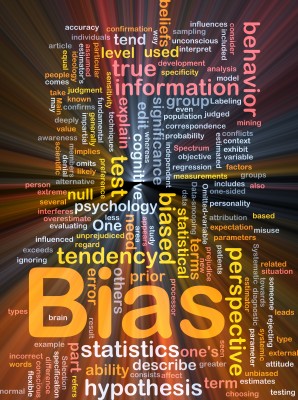The madman has lost everything except his reason.
–C.K. Chesterton

The Efficient Market Theory is a lie (that humans do not possess emotions) that generated many other lies (the claim that the safe withdrawal rate is a constant number is only the most dangerous of a large number of such little stinkies that have come to our attention during the discussions of the past six years) during its years of influence. We have called out The Big Lie and few have been willing to put forward much of an effort to defend it in reasoned debate; I think it would be fair to say that those few who have been willing to give it a shot have been less than successful. It’s all over but for the shouting. A model for understanding how stock investing works that cannot be defended by those who follow it is a model of how stock investing works that is headed to the trashbin of history. The future belongs to the Behavioral Finance School.
But not the Behavioral Finance School as it now exists. As Behavioral Finance becomes the dominant model for understanding how stock investing works, the outlaw will become the sheriff. Proponents of the Behavioral Finance School will become more confident, more expansive, more assertive.
Proponents of the Behavioral Finance Model Have Been Insufficiently Aggressive in Challenging the Efficient Market Model.
It is not politeness for proponents of the Behavioral Finance School to pretend that the Efficient Market Theory is sorta kinda okay until something better comes along. It is cowardice. The Efficient Market Theory is a failed model. Failed investing models hurt people by encouraging people to invest in ineffective ways. The failed model needs to be taken out to the garbage dump before it stinks up the place even worse than it has already.
I have seen tens of thousands of abuse posts put forward by investors who are trying to maintain their confidence in the Efficient Market Theory. I do not recall seeing the first one by any investor who belongs to the Behavioral Finance School. That contrast is amazing and revealing and ominous. It’s indicative of the problems that realistic investors face today (this article was posted in December 2007). There is no intellectual case that can be made for the Efficient Market Theory. However, it has been poisoning the atmosphere for so long now that it is hard to convince people that it is not really a necessary part of our oxygen supply. There are many investors who long for discussion of more realistic investing strategies but who lack the courage to hope for a day when people can talk about how stocks work reasonably and honestly and plainly and frankly. It can be done. The first step is taking out the trash. Get rid of the poisonous fumes and new ideas will rush in to fill the void. I have seen this happen on numerous occasions at our boards.
Behavioral Finance proponents need to stop pussyfooting around. Our model and the Efficient Market Theory model cannot coexist. This is an us-or-them situation. For us to gain influence with large numbers of investors, those peddling the nonsense gibberish that became popular during the longest and strongest bull market in U.S. history need to be shown the door.
It sounds harsh. I mean for it to sound harsh. When a doctor tells you that he is going to need to cut, that sounds harsh too, does it not? He’s cutting not to hurt you but to heal you. It is by cutting out the cancer that we give the healthy tissue more years of life. The idea of an efficient market is a disease. It is not just that it generates poor investing strategies. It is that it makes the formulation of sound investing strategies impossible, unimaginable even. The Efficient Market Theory tells us that applying thought to the development of investing strategies does not pay, and thereby turns humans into monsters. Man is a thinking being; when we turn off our brains, we transform ourselves into something less than what we were meant to be; we cannot not think and yet remain recognizably human.

The Efficient Market Theory is not a theory suitable for humans. It is not enough for us to find fault with it or to warn people about it or to engage in negotiated compromises with those who place their trust in it. I’ve seen many try half steps and I have never seen such efforts bear fruit. The discredited model is flawed at its core. We need to dig a big hole, drop it in, and shovel the dirt back on top. Then, like Father Mackenzie, we need to brush the dirt off our hands and walk away. We need to cut out the cancer. We need to make this Frankenstein of an investing theory a part of our history and make regaining what makes us human the top priority for our future.
The future of behavioral finance is to become the top dog. We need to stop apologizing for what we believe. We need to be less tentative, less compromising. Not because we are arrogant. Not because we are mean-spirited. Not because we possess a thirst for power. Because we want to help investors understand how stock investing really works. So long as the Efficient Market Theory walks and talks and struts and frets, it sucks all the oxygen out of the room; a theory that posits that intelligence serves no purpose is a theory that cannot be reasoned with — it is theory that can only be followed (with disastrous consequences once the bull market that gave birth to it comes to an end) or stabbed to death and buried deep in the ground.
We need volunteers to arrange for the printing of bumper stickers –“The Efficient Market Theory Is No Friend of the Middle-Class Investor!”
Behavioral Finance Proponents Do Not Place Sufficient Focus on Instructing Regular People How to Invest.
There is no book on the shelves today that tells us more about how stock investing works in the real world than Robert Shiller’s Irrational Exuberance. The book has one big flaw, however. The book provides little in the way of practical investing pointers. Just about everything that Shiller says is so. But middle-class investors need to know more. They need to know what to do with the insights he imparts.
This hesitancy to address the practical is one manifestation of the general lack of assertiveness of those in the Behavioral Finance School discussed above. Many behavioral finance proponents seem to feel that it is sufficiently bold to point out flaws in the Efficient Market Theory model and that it would be going too far to actually instruct investors as to what to do with their money. After 20 years of wild bull-market thinking, it seems a daring thing to discuss realistic strategies for long-term stock investing.
I know the feeling. It took me a long time to work up the courage to post the headlines for the lead articles at the Risk Evaluator (“Retirement Calculator Smashes Safe Withdrawal Rate Myths”) and Scenario Surfer (“Portfolio Allocation Shocker — Timing Beats Rebalancing!”) sections of the site. But you know what? Giving effective investing advice is the point of the game. If the insights generated by the Behavioral Finance School do not translate into better investing practices, they serve no constructive purpose.
The problem is that it is human nature to focus on the short term. The Efficient Market Theory does not make sense; it is not at all likely to generate good long-term results. Until such time as we see a Big Price Drop, however, we have a hard time accepting that the investing advice that follows from use of this model is as bad as a reasoned analysis tell us it is. It doesn’t make sense, but….but….but — it works, doesn’t it? Yes, for the length of a wild bull market, it works. That doesn’t make it good advice. That’s makes it advice that possesses a capacity to become popular for a time. There’s a difference.

Those of us in the Behavioral Finance School need to place more courage at the service of our convictions. If we believe that it is important to take human emotions into account, we need to reject out of hand the model that argues that this is not necessary. And we need to say in clear and simple and understandable and blunt terms how we believe people should change their investing strategies as a result of our teachings. We can’t be intimidated by the fact that the Efficient Market Theory approach seemed to work just swell for a certain length of time. People need to know how to invest now and in the future. The Summer of 1999 is over and it’s not coming back anytime real soon.
One of the reasons why many middle-class investors do not today have confidence in the Behavioral Finance School is that those of us in this school too often do not speak with the voice of authority. We speak tentatively, as if we are not yet really sure ourselves that the Efficient Market Theory has been proven a washout. We speak like teenagers asking if we can borrow the car on Saturday night. Are we not men (and women)? Do we not pay our own room and board and buy our own cigarettes and coffee? Are we not old enough to vote and drink and die in foreign wars? If we cannot work up the courage to serve Behavioral Finance straight up and with no chaser, how can we expect our readers to stake their retirement savings on it?
Behavioral Finance Proponents Have Incorporated Elements of Excessive Rationalism Into Their Own Model.
The core flaw of the Efficient Market Theory is its excessive rationalism. By pretending that investors are entirely rational, it has caused a good number of them to become mad-people. The great irony of our experiment with this doomed model is that, by positing that investors are able to avoid the effects of emotion when making investing decisions, the model has created a generation of investors more intensely emotional than any that has come before it. Today’s investor has more tools available to help him make rational decisions. But he disdains the findings of these tools in favor of a dogmatic belief that intelligence provides no help in the investing area because the price of stocks, no matter how nutso, is always in some strange and indefinable sense “just right.”
The Behavioral Finance model is generally viewed as the leading alternative to the Efficient Market Theory model. The reality, though, is that the new school has not kept itself entirely free of the influence of the failed model. There are pockets of excessive rationalism in the Behavioral Finance School too.
Behavioral Finance proponents often use surveys and statistics and scientific experiments to make their points. This is a fine thing to do to a point. I believe that there are times when it is overdone. Investing is an art, not a science. The Efficient Market Theory has shown us what we get when we try too hard to turn it into a science. By letting in the discussion of human emotions, the new school makes a great leap forward. I worry, though, that we still feel this need to dress up our insights in the clothes of science. The temptation is always there to pretend that we are putting forward science when what we really are putting forward is science fiction.
I am not saying that we should not make use of surveys and statistics and scientific experiments. Those things have value. I am saying that we should not force it. There are some points that can be made best through the use of science and there are some points that are just not scientific in nature; it is when we try to force the issue and to prove nonscientific points with the use of scientific trappings that we get into trouble.
The scientific method is a tool. Proponents of the Efficient Market Theory model have misused this tool terribly. Let’s not repeat their mistake. Let’s use science when appropriate and avoid trying to trick people with the use of the trappings of science when we are making points that are simply not properly expressed through use of the scientific method. Nonscientific findings are different from scientific findings; scientific findings are not better or more important or more trustworthy or more powerful, just different.

The madman holds onto his power to reason, Chesterton tells us. Why? Because it’s all he has left as he nears the end of his descent into insanity. When you reach the point of madness, you have lost everything but your reason; that’s why your reason has gone out of control and become twisted. Humans should cherish their ability to reason. They should cherish all the other things that make them human as well. We need to give up the excessively strong preference for the trappings of science that transforms reason into rationalization, the scientific process into dogmatic madness, humans into slogan-quoting monsters.
It’s not enough for us to become humans again. We need to become humans who are proud of our humanity, humans who make no apologies for being such and who do not aspire to someday becoming more-predictably-behaved robots.
Behavioral Finance Needs to Avoid Abstractions and Stress Stories.
I tell stories. I quote song lyrics. I make jokes. In articles on investing!
Have I gone loony? I don’t think so. From my way of seeing things, it is all those who try to give sound investing advice without telling stories or quoting song lyrics or making jokes who are a bit touched. It cannot be done. Investing is an activity engaged in by humans. It scares us. It excites us. It inspires us. It intimidates us. It fools us. It comforts us. God gave us jokes and songs and stories to help us make sense of our troubles and our woes and out excitements and our discoveries. If we don’t make use of the tools God gave us to do the job, we cannot make proper sense of the investing project.
I once wrote a blog entry with the title “The Community Toilet Is Overflowing!” How else to make the point that the shit has piled up so high that we simply must make a commitment to dealing with it or pay a big price in terms of lost self-respect? I once wrote a blog entry with the title “John Bogle Started Out as a Little Boy.” How else to make the point that this august Expert of Experts really does at times get things wrong in a big way and that it’s not fair to him for some to pretend otherwise? I once wrote an article with the title “What’s Faith Got to Do, Got to Do with It?” How else to make the point that buy-and-hold is not the product of a mathematical calculation but of a terrifying leap into the unknown?
The fall of the Efficient Market Theory is not the fall of a single investing strategy. It is the fall of a way of thinking about stocks. It is the fall of a language. It is the fall of a process. We are now free to create a new way of thinking, a new language, a new process. I foresee us turning to a more natural way of thinking, a warmer language, a more fluid process.
What is wrong with the Efficient Market Theory is that it is a pompous and arrogant and rigid and eggheaded and stuck-up way of approaching the investing project. Humans know more appealing ways of being. We have to go outside the bounds of what is considered “normal” in the investing game to find appealing (and effective) ways of thinking, speaking, and proceeding. The tools needed already exist. We just need to let go of any preconceptions that bind us to the tools that have come to fail us so utterly and completely and obviously in recent years.
As Behavioral Finance Comes Into Its Own, It Will Make Use of a Wide Diversity of Disciplines to Formulate Its Insights.

Biologists have things to teach us. Engineers have things to teach us. Historians have things to teach us. Astronomers have things to teach us. Journalists have things to teach us. Comedians have things to teach us. Mothers have things to teach us. Nurses have things to teach us. Business executives have things to teach us. Baseball managers have things to teach us. Card sharks have things to teach us.
Let’s look up their phone numbers. Let’s give them a call. Let’s invite them to the party.
We have permitted the demanding nature of one form of learning to block out the ability of many other forms of learning to teach us things we need to know for far too long now.
Behavioral Finance Proponents Should Feel No Shame about Their Fallibility.
The most amazing thing that happened in The Great Safe Withdrawal Rate Debate was the failure of the Big-Name Experts to help us spread the word about our findings that the Old School studies got the numbers wildly wrong and are thus likely to cause millions of busted retirements in days to come. What’s up with that?
My sense is that the “experts” like the certainty that the Efficient Market Theory permits. Writing about investing is a dangerous business. Get something wrong and you can cause your readers a great deal of pain. Cause your readers a great deal of pain, and you could be held financially liable for doing so in this litigious society of ours.
The reality is that there is no way to avoid the uncertainty inherent in advocacy of any investing strategy. I believe that what the “experts” who endorse the Efficient Market Theory are looking for is an approach that permits them plausible certainty. The Old School safe withdrawal rate studies get the number wildly wrong, and will likely cause millions of busted retirements in days to come. Those studies do possess a certain appeal for the people giving the advice, however. Cite the Old School studies as your retirement guidance, and you never need to worry about providing up-to-date information (the Old School studies are rooted in a false assumption that the safe withdrawal rate is a stable number, that the same withdrawal rate is safe at all possible valuation levels). The Efficient Market Theory greatly simplifies things. It does so at the cost of accuracy, and the wild inaccuracies that result cause great harm to investors. To those giving the advice, however, I can see how this false simplicity could be seen as a bit of a plus.
The idea with the Efficient Market Theory is not to state things correctly; it is to state things simply but incorrectly. It is viewed as more important to be clear and simple than it is to be accurate and perhaps a wee bit complex. We see this not only in the retirement advice given under this model. It is so with the advice given on timing the market. We are told that all timing is bad even though the historical stock-return data shows us that long-term timing does indeed work. We are told that rebalancing is a good idea even though making valuation-informed allocation shifts has always provided better long-term results; it would be a more complex task for experts to have to explain which price changes require allocation shifts and which do not. We are told that risk is always rewarded.; in reality, it is rewarded in some circumstances and not in others. We repeatedly see that the reality is just a bit more complex than the make-believe, almost-true story told by Efficient Market Theory proponents.
What drives this obsessive concern with simplicity, a concern so great that many investing experts have been willing to see their readers suffer big financial losses rather than make them aware of the huge flaws in the old investing model? I think it is a fear of being perceived to be wrong that drives this widespread reluctance to talk straight. The negative trait that I see over and over again among today’s investing “experts” is an unwillingness to acknowledge mistakes. They just cannot bring themselves to do it. It’’s been nearly six years since the Retire Early Community identified the analytical errors in the Old School safe withdrawal rate studies and these studies are still cited in articles on retirement to this day!
If we make our investing advisors feel too concerned about what will happen if they get things wrong, we hurt ourselves. They will stop talking straight with us, they will concoct nonsense gibberish simple-but-wildly-inaccurate methodologies like the Old School safe withdrawal rate methodology and we will be stuck holding the bill. We will complain when millions of our retirements go bust, but do you know what the “experts” will say then? Expert A will say “I wasn’t the only one giving wrong numbers, Expert B was too,” and Expert B will point to Expert C and so on and so on.

We need a new class of experts. We need experts who have a little bit of gumption. Most of all, we need experts who care too much about their readers to mislead them in serious ways. The first step to attracting those sorts of people to the field is making clear that there is no longer a cultural imperative that investing “experts” be all-knowing. We should encourage our “experts” to acknowledge mistakes when they learn of them and to benefit from the learning experiences that often follow from admitting having gotten things wrong.
Behavioral Finance Should Make Use of Discussion-Board Conversations to Show the Failings of the Discredited Model and to Look for Clues As to What Works Better.
There was a recent article in Money magazine that insulted middle-class investors in two big ways. The article provided a list of resources and for discussions of investing it recommended the Lindauerheads board. It insulted us by suggesting that nothing said on a discussion board could be trusted. My experience has been very much counter to that suggestion. I have seen insights of great value posted on all sorts of boards; there are many Retire Early community members who possess more investing expertise than the sorts of people frequently cited in Money, in my assessment. The other insult, of course, was the recommendation of the Lindauerheads board. There was no mention that this board was founded and is administered by the group of highly abusive posters who destroyed the Vanguard Diehards board, a board that was once one of the best on Planet Internet.
Discussion boards are an important communications medium of the future. Behavioral Finance proponents need to pay special attention because discussion boards are particularly well-suited to helping us learn about the emotional dimension of the investing project. Discussion boards permit us to see how investors are making use of the strategies explicated in other, more formal, media. The cliché comment that “you can’t trust anything you hear on a discussion board” needs to go. This is an important medium, and we need to begin treating it as such. We need to begin taking discussion boards seriously.
That’s not to say that discussion boards are perfect today, of course. The big problem today is the lack of integrity in the discussions. For the discussions to have integrity, site owners need to enforce the site rules in a reasonable manner. We have seen Motley Fool fail at this. We have seen the Early Retirement Forum fail at this. We have seen Morningstar fail at this. Site owners that open boards incur a responsibility by doing so. Middle-class investors need to begin insisting that they honor those responsibilities.
Boards of integrity will provide us a powerful tool for learning things about how to invest effectively for the long term that was not available to us before.
Behavioral Finance Should Encourage New Ways of Reporting on Financial Developments.

I am appalled when I see a big-name “expert” use P/E1 as his valuation assessment tool. I mean, come on. People who are serious in their study of the effects of valuations have known about the flaws of P/E1 for a long time now. Big-name experts have access to the internet, where explanations of the flaws are easily accessible. Is there some reason why we continue to see the same nonsense put before us over and over and over again?
There is a reason, of course. The reason is that a good number of us like seeing nonsense put before us. As Scott Burns once put it, we are not told the truth about stock investing because the truth “is information most people don’t want to hear.”
Guess what? The experts need to begin telling us the truth whether we want to hear it or not. That’s the job. Investors are humans. That means that we are weak, that we are generally not well-informed, that we are emotional. It is the job of the investing expert to rise above the common human weaknesses and to present things as they are, not as some of his or her readers would like them to be.
It is the straight-talkers who are the true experts, in my view. Behavioral Finance proponents should applaud the straight-talkers and point out the games being played by the double-talkers. The future of behavioral finance lies in reforming a culture in which investing experts know too much and care too little in preference for one in which we combine reason and emotion in a mix that generates investing advice suitable for use by humans and other smart, fun-loving mammals.
